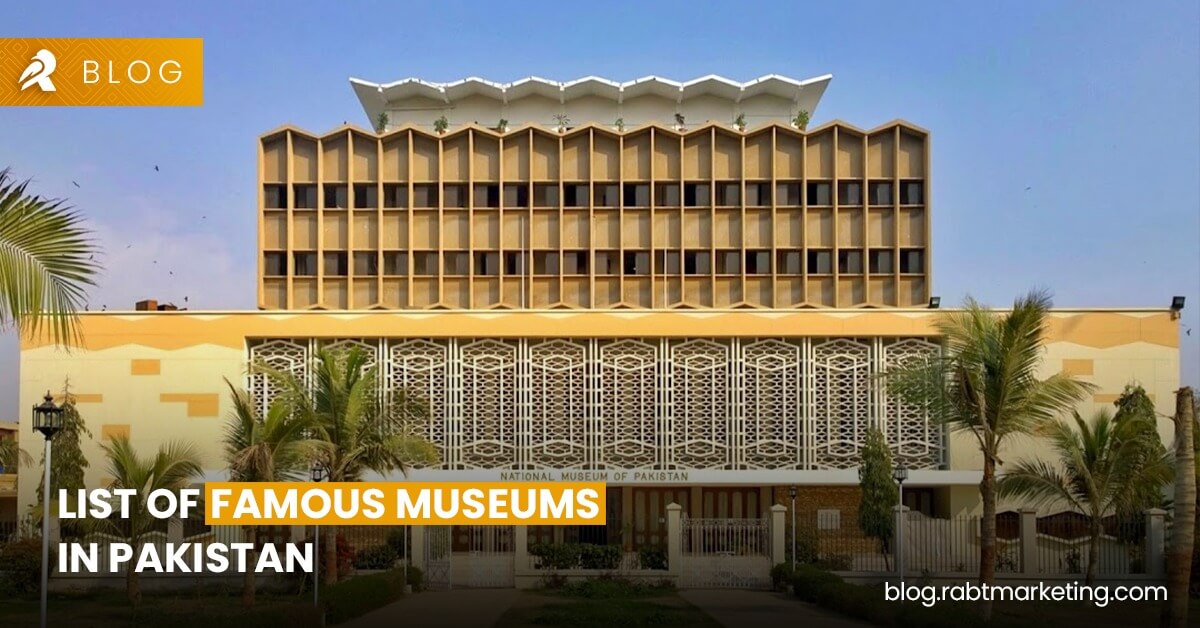Throughout history, people have always had a natural desire to gather and keep things that are culturally and historically significant. Museums today are a result of this desire. Museums provide a unique opportunity to learn about different cultures and often serve as important historical sites. They serve as repositories of the nation’s heritage, showcasing artifacts, artworks, and historical treasures that provide valuable insights into the country’s past.
Pakistan has many museums that protect our rich heritage and cultural treasures. These museums are not mere buildings; they are portals that transport you across centuries, connecting you to the soul of the nation. There are several museums in our country to choose from. Here, we have gathered a list of 19 museums in Pakistan that are worth visiting. Let’s take a closer look at each of them.
Lahore Museum
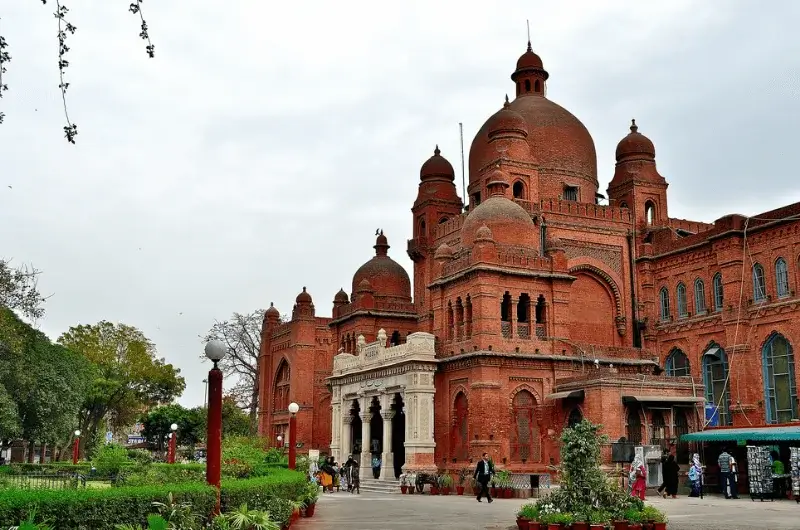
The Lahore Museum is a significant fort in Pakistan, known for being one of the oldest and largest. Its main objective is to preserve and enhance Pakistan’s cultural, visual, and material heritage. Within its permanent collection, the Lahore Museum possesses around 60,000 valuable artifacts that hold historical, cultural, and artistic importance. These objects encompass a wide range of Pakistan’s ancient and modern heritage, spanning Islamic, Buddhist, Sikh, Hindu, and Jain histories.
Pakistan Air Force Museum, Karachi
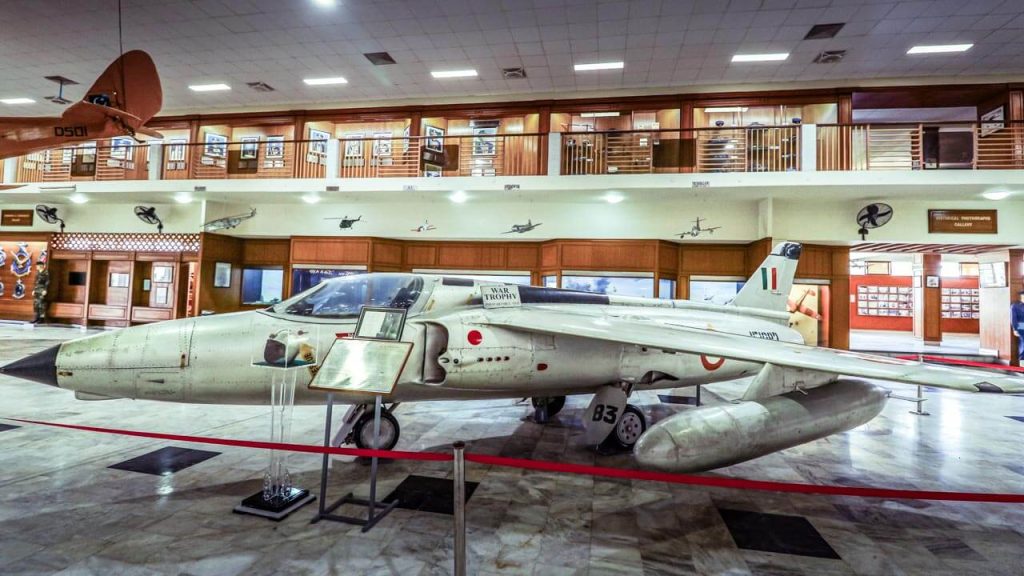
The PAF Museum is a must-visit place for anyone interested in Military Aviation or the history of the Pakistan Airforce. This museum not only preserves the history of the Pakistan Air Force but also promotes a positive relationship between the Air Force and the general public. The museum has beautiful gardens and displays aircraft and defense equipment like the F-86 Sabre, F-104 Starfighter, Mirage, and helicopters. Visitors’ attractions include; Shuhada Monument, Archive Gallery, Quaid’s Aircraft, and Indian Gnat. You will also find the Souvenir shop, Pafwa shop, restaurant, and play at the museum.
Lok Virsa Heritage Museum, Islamabad
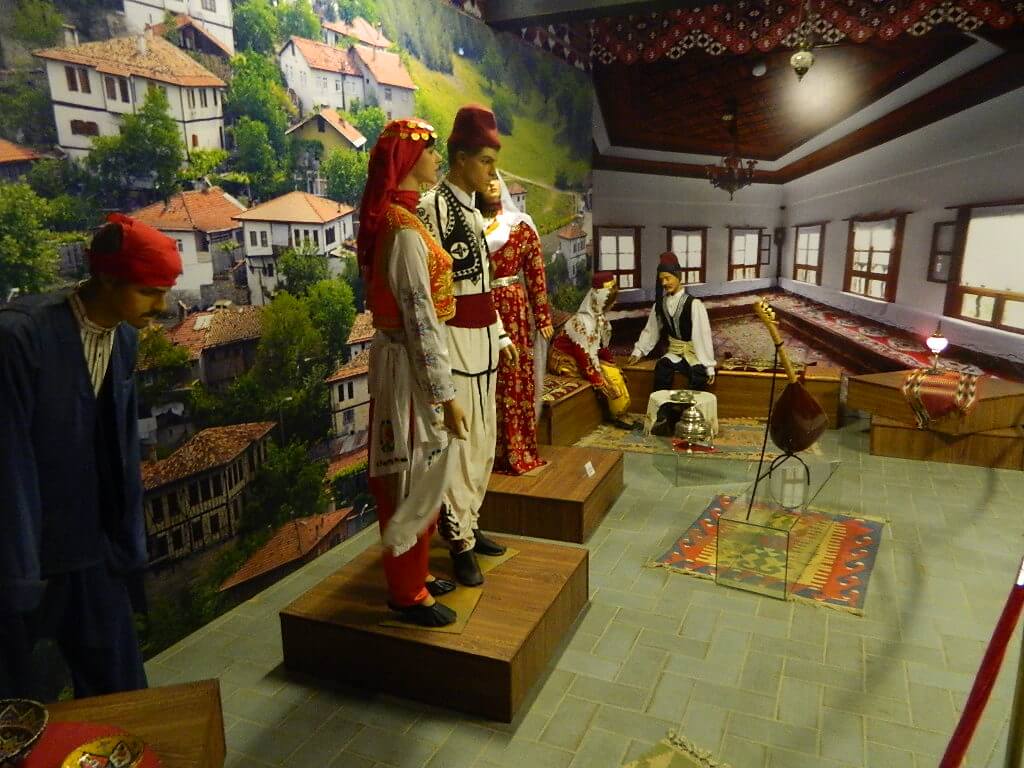
The Lok Virsa Heritage Museum was established in 1982. The museum showcases the history and traditions of the people of Pakistan, both from the mainstream and remote regions. Its main purpose is to educate and enlighten Pakistan’s present and future generations by preserving its cultural heritage. It is the first ethnology museum in Pakistan. With a covered area of 60,000 square feet, it is one of the largest museums in the country.
Harappa Museum

The Harappa Museum in Punjab, Pakistan, is dedicated to archaeology. It showcases a variety of artifacts from the Indus Valley Civilization, including items made from copper, bronze, and clay. The museum has two galleries and currently displays thirty showcases filled with objects like terracotta figurines, toys, skeletons, and everyday items made from ivory and shell. These artifacts provide insights into the civilization’s ancient arts, crafts, and technology.
National Museum of Pakistan, Karachi

The National Museum of Pakistan was established in 1951. Initially, it had only four galleries, but it has since grown to include eleven galleries, including a unique “Quran Gallery.” The museum houses over 300 copies of the Quran, with around 52 rare manuscripts on display. The museum showcases items from the Indus and Gandhara civilizations, Islamic art, miniature paintings, ancient coins, and manuscripts documenting Pakistan’s political history. It also exhibits ancient coins, personal belongings of national heroes like Quaid-e-Azam, Allama Iqbal, and Liaqat Ali Khan, as well as Muslim clothing, pottery, glasses, and tools.
Taxila Museum

The Taxila Museum is located in the middle of several archaeological sites in the Taxila region and has a wide range of artifacts from the Gandharan period. Currently, the Taxila Museum displays around 7,000 artifacts, while another 30,000 are kept in storage.
The museum’s main collection includes the settlement sites of Bhir Mound, Sirkap, and Sirsukh, as well as the Buddhist stupas and monasteries at Dharmarajika, Mohra Moradu, Jaulian, Kalawan, Bhamala, Tofkian, Bajran, and Giri.
Swat Museum
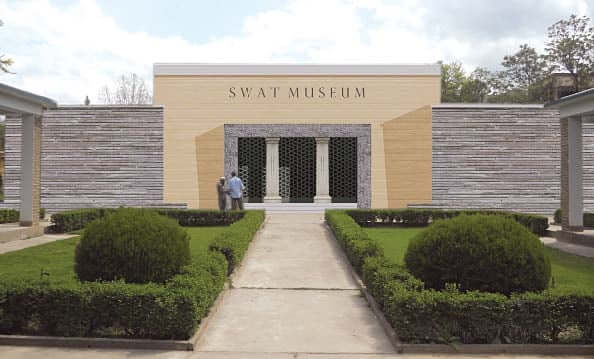
The Swat Museum is situated between Mingora and Saidu Sharif. It is well-known for its collection of ancient artifacts from the Gandhara civilization. The museum displays valuable items such as jewelry, wooden objects, and Buddhist artifacts that provide evidence of the glorious civilization. These artifacts are carefully preserved to protect the heritage of the old culture. The museum exhibits Gandharan statues and carvings depicting the life of Buddha.
State Bank Museum, Karachi
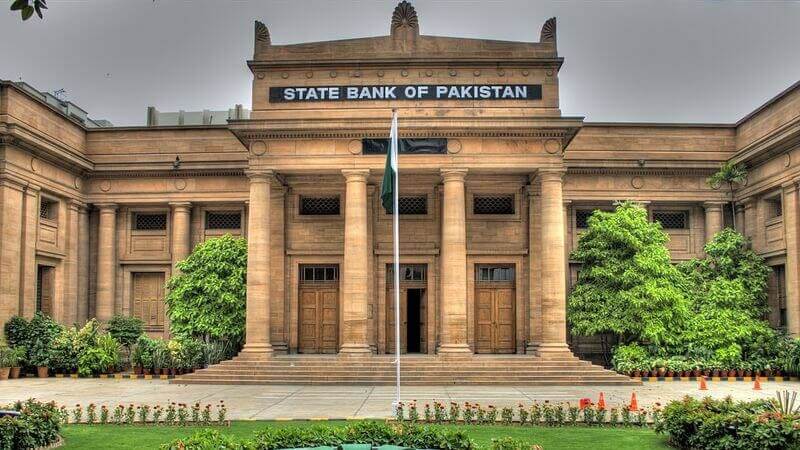
The State Bank Museum was established to create the first Money Museum in Pakistan. Its main goals are to preserve the cultural heritage found in the old SBP Building, educate the general public and younger generation about the history of the State Bank of Pakistan, promote artistic talent in the country, and foster cultural exchange with other museums worldwide.
The SBP Museum consists of seven galleries showcasing the history, including;
- History of State Bank of Pakistan
- SBP Governors Gallery
- Coins Gallery – I
- Coins Gallery – II
- Stamp Gallery
- Currency Gallery
- Sadequain’s Art Gallery
Pakistan Army Museum, Rawalpindi

The Pakistan Army Museum is a military museum in Rawalpindi, Pakistan. It was established in 1961 to preserve the history of the Pakistan Army through artifacts, pictures, and displays. It is one of the largest museums in the country and showcases a wide range of weapons, uniforms, and equipment from different eras, including the Mughal Era to modern times. The museum is housed in the colonial barracks of the Pakistan Army’s General Headquarters (GHQ) complex. It is a popular destination for those interested in weaponry and war history, offering a detailed look at the evolution of the Pakistan Army.
Quaid-e-Azam House Museum, Karachi
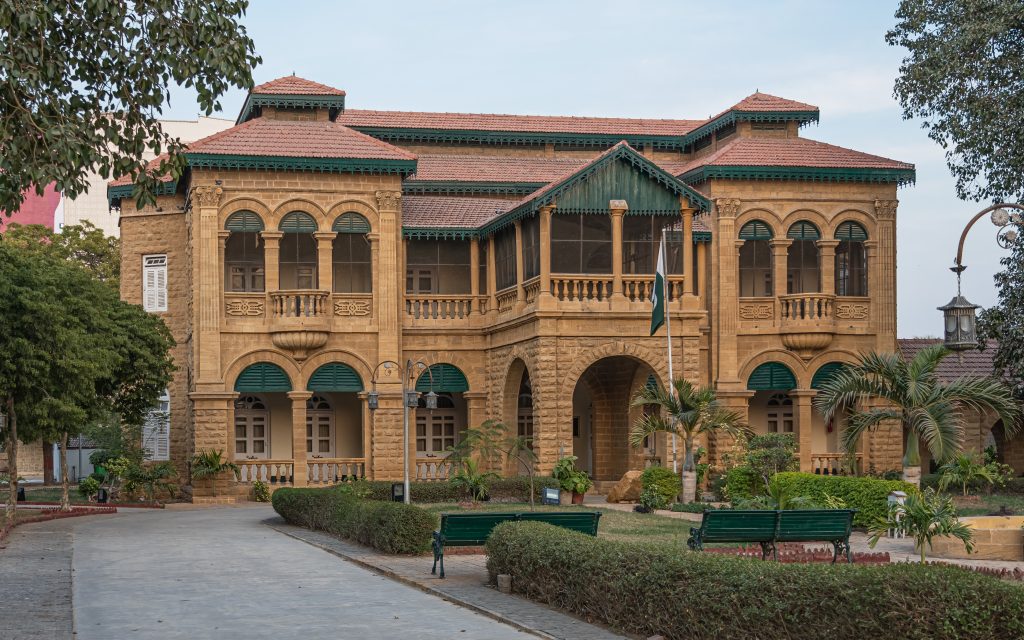
The Quaid-e-Azam House, also called Flagstaff House, is dedicated to showcasing the personal life of Muhammad Ali Jinnah, the founder of Pakistan. It was designed by the British architect Moses Somake. Jinnah resided in this house from 1944 until his death. Jinnah purchased the house in 1943 for 150,000 Pakistani Rupees. In 1985, the Pakistani government acquired the building and converted it into a museum.
Pakistan Monument Museum, Islamabad
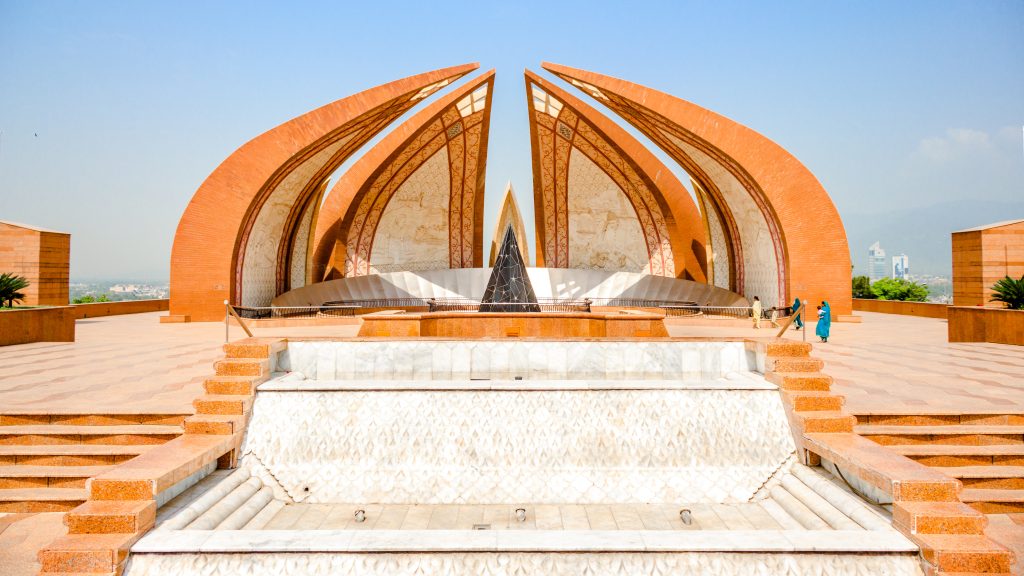
The Pakistan Monument is a national monument and museum located in Islamabad, Pakistan. It was built on the Shakarparian Hills to symbolize the unity of the Pakistani people and honor those who sacrificed for the country’s future. The monument has a unique design, with four large petals representing the main cultures of Pakistan and three smaller petals representing minorities and specific regions. The structure emphasizes unity and togetherness.
The monument features a star made of black granite and golden stars to honor those who gave their lives for Pakistan and a moon crescent made of stainless steel with writings from important figures in Pakistan’s history. The inner walls of the monument showcase artwork depicting significant landmarks, people, and cultural themes of Pakistan. There is also a museum that tells the story of Pakistan’s creation. The monument is a popular tourist destination and offers a panoramic view of Islamabad from a viewing platform. Its aerial view resembles a star and crescent moon, which are also found on Pakistan’s flag.
Pakistan National Council of the Arts, Islamabad
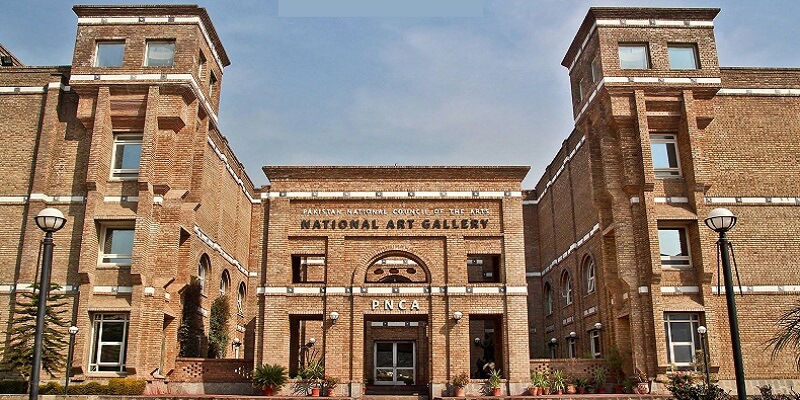
The Pakistan National Council of the Arts (PNCA) was established in 1973 to support and promote the arts in Pakistan. It aims to create an environment where the arts can thrive and be accessible to everyone. The policies of PNCA are created by its Board of Governors. The Board of Governors reports to the Federal Minister for National Heritage and Culture Division.
The council is divided into four major divisions: Visual Arts, Performing Arts, Pictorial Exhibitions, and Children’s Art Workshops. The council also established the National Puppet Theatre to revive the dying art of puppetry. Its mission is to support artists through grants, training, and international exposure. It organizes festivals and shows to showcase local and international talent and encourages arts education and outreach programs to engage the wider community.
Mohatta Palace Museum, Karachi
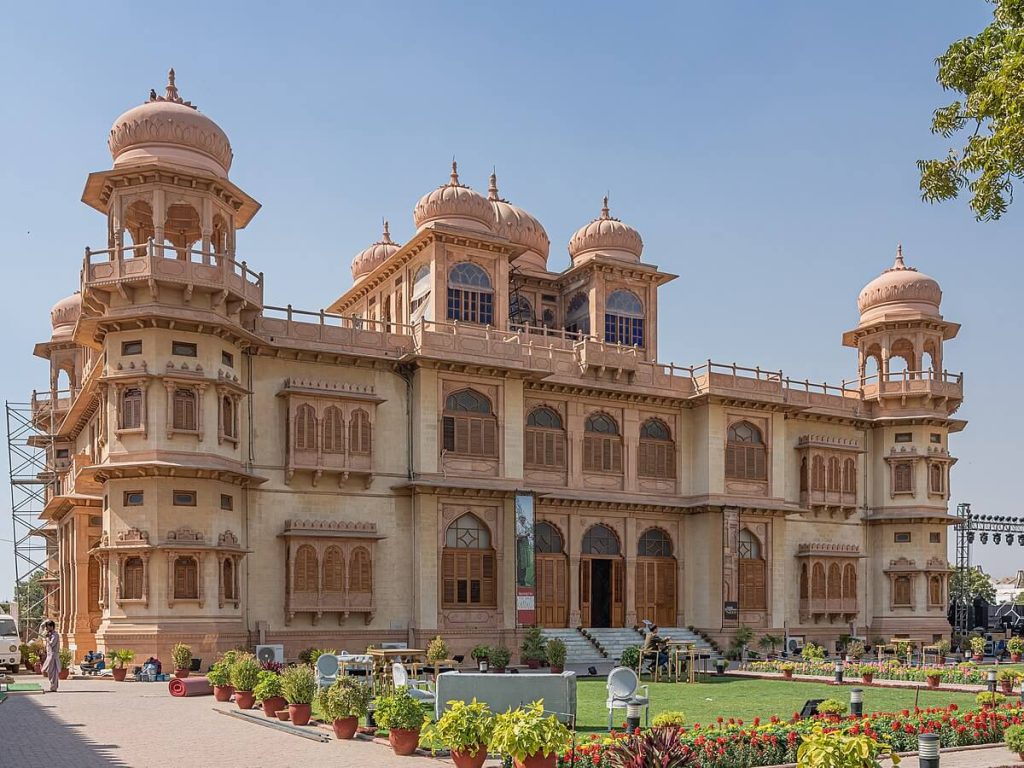
The Mohatta Palace was established in 1927 as the summer residence of Shivratan Mohatta, a wealthy businessman. The palace is made of pink Jodhpur stone and local yellow stone. It has large rooms for entertainment on the ground floor and private facilities on the first floor. The palace also has a rooftop with a view of the surrounding area. The Mohatta family lived in the palace for about two decades before leaving for India after the partition. The palace is now a museum that showcases art and history.
Allama Iqbal Museum, Lahore
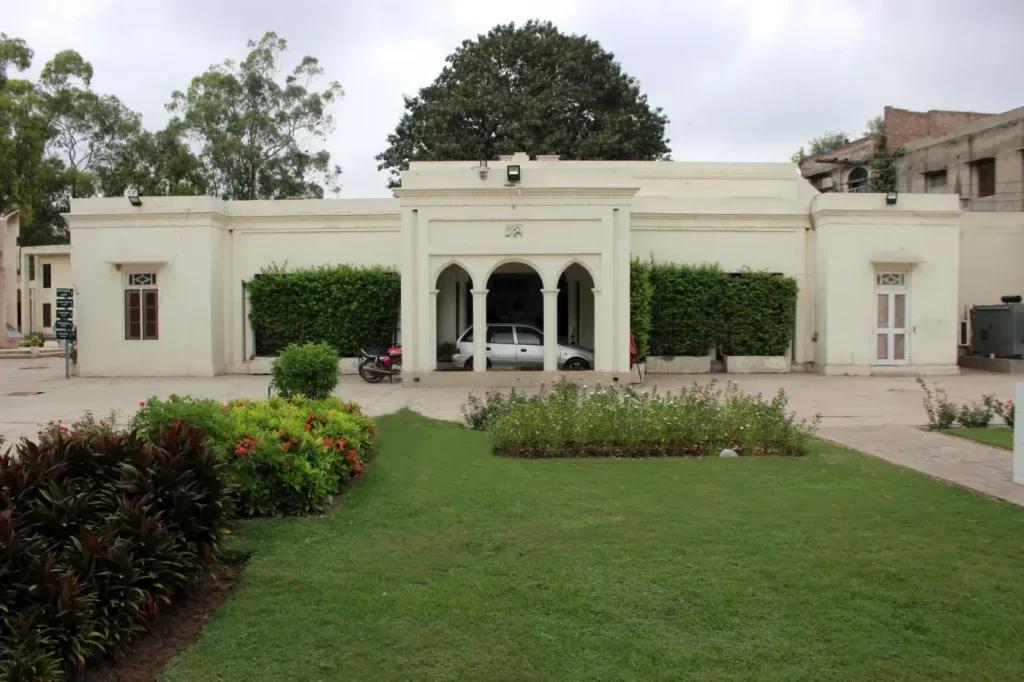
The Allama Iqbal Museum, also known as the Javed Manzil, was the residence of Muhammad Iqbal, a famous Pakistani poet, for three years until he died. The building, constructed in 1935, was designed by Iqbal himself and cost 42,025 British Indian Rupees. The museum showcases Iqbal’s belongings, including his handwritten drafts, photographs, certificates, awards, and educational degrees. It also contains a library and nine galleries. In 1961, the Pakistani government purchased the residence from Iqbal’s son and converted it into a museum to preserve Iqbal’s legacy. The museum was officially opened in December 1984 by President Muhammad Zia-ul-Haq.
Chitral Museum
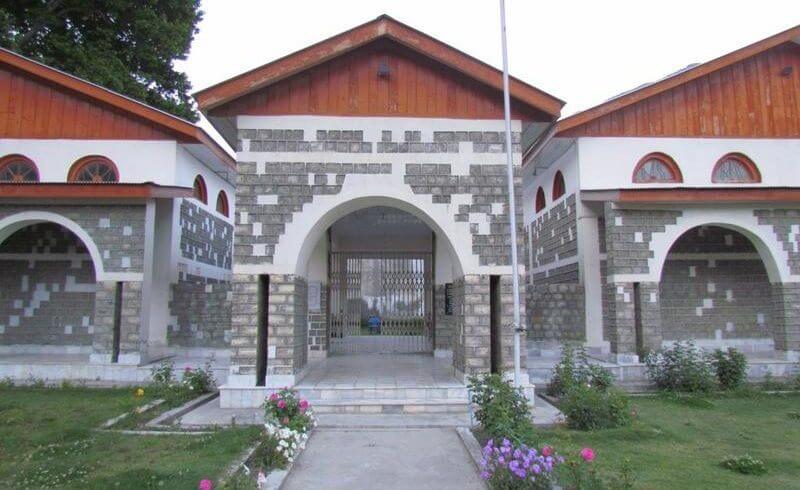
The Chitral Museum in Pakistan’s Chitral District was established on July 8, 2010, to preserve the region’s rich cultural heritage. It consists of two galleries: the Ethnological Gallery and the Archaeological & Kalash Gallery.
It displays items such as embroidery, jewelry, weapons, ceramics, musical instruments, hunting tools, furniture, and household objects. The museum also houses a collection of weapons that reflect the traditions and culture of the Chitral Valley from the 19th and early 20th centuries. Additionally, there is a display of traditional ceramics.
National Museum of Science and Technology, Lahore
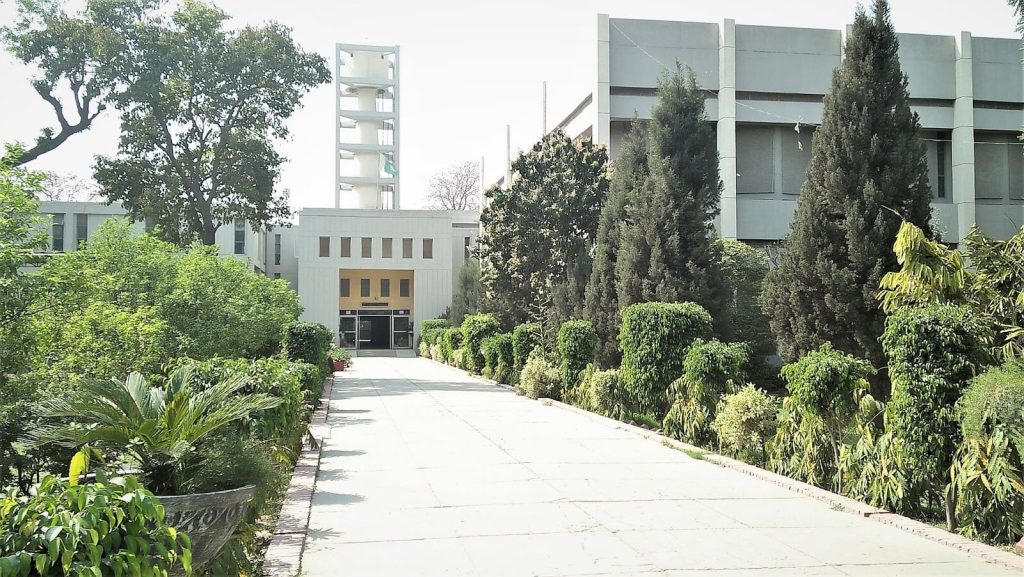
The National Museum of Science and Technology is located near the University of Engineering & Technology on G.T. Road in Lahore. It is a museum that displays the heritage of humanity and its environment. It was founded in 1965 and is open to the public. Initially, it was meant for university students but later opened to everyone. The museum has expanded over the years and now operates under the Science and Education Department. It aims to promote science awareness among students through competitions and activities.
Pakistan Railways Heritage Museum, Islamabad
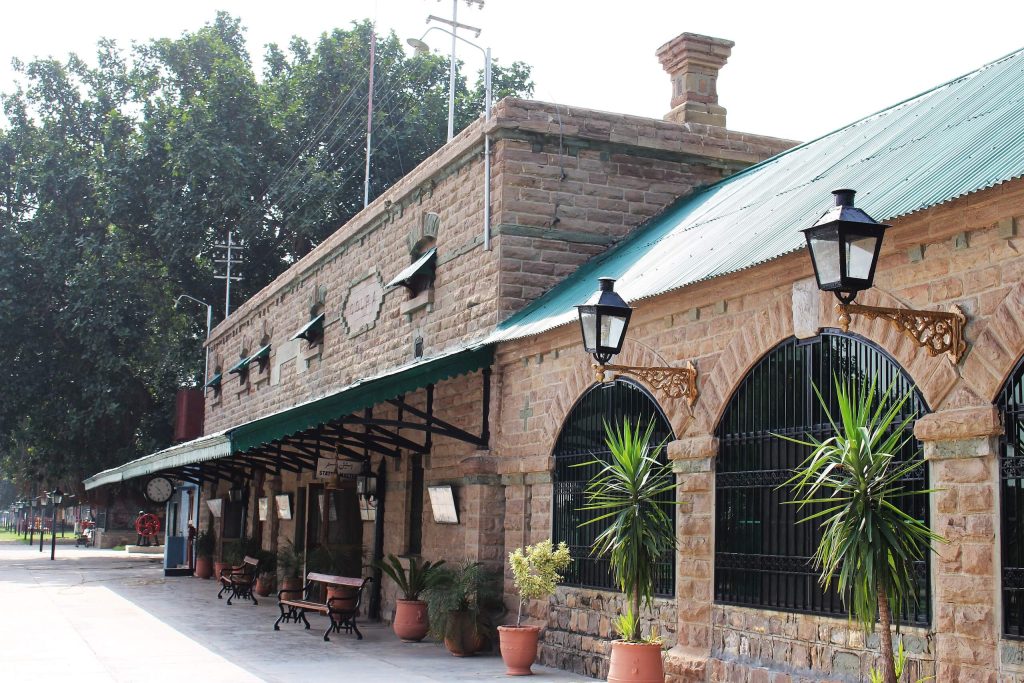
The Pakistan Railways Heritage Museum, also known as Golra Sharif Railway Museum, is located near Islamabad, Pakistan. It was established in 2003 and renovated in 2018. The museum displays artifacts and relics from over 150 years of railway history, dating back to the British Raj. The museum showcases various items related to the railways, including locomotives, coaches, and signaling systems. It also highlights the social and anthropological impact of railways on the subcontinent. The museum attracts tourists and railway enthusiasts, and it has become a popular location for the entertainment industry.
Pakistan Maritime Museum, Karachi
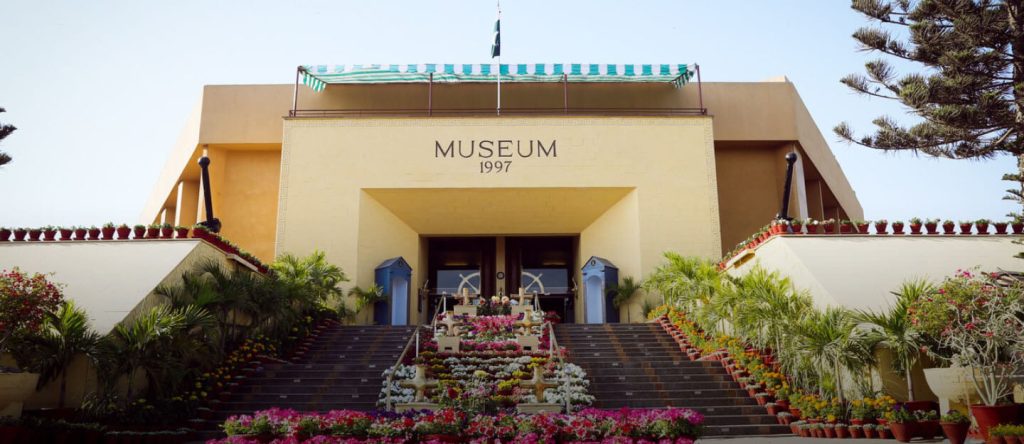
The Pakistan Maritime Museum is located in Karachi and was completed in 1997. The Museum was established to preserve artifacts and honor the country’s rich maritime history. It includes an auditorium and six galleries, with the most popular one resembling the Manora Lighthouse. The museum features a man-made lake with a small minesweeper ship and a miniature submarine. Visitors can participate in a recreation of the sinking of the Indian Navy ship ‘Khukri’ during the 1971 conflict.
The Pakistan Maritime Museum showcases the Pakistan Navy Gallery, vintage equipment, Karachi Harbor Gallery, Scientific Gallery, paintings, aquariums, vintage weapons, sculptures, murals, and more. Additionally, the museum regularly hosts a dolphin show with Beluga whales, dolphins, and seals.
Also, Read Our Blog: Top 13 Best Historical Places in Peshawar
Sethi House Museum, Peshawar
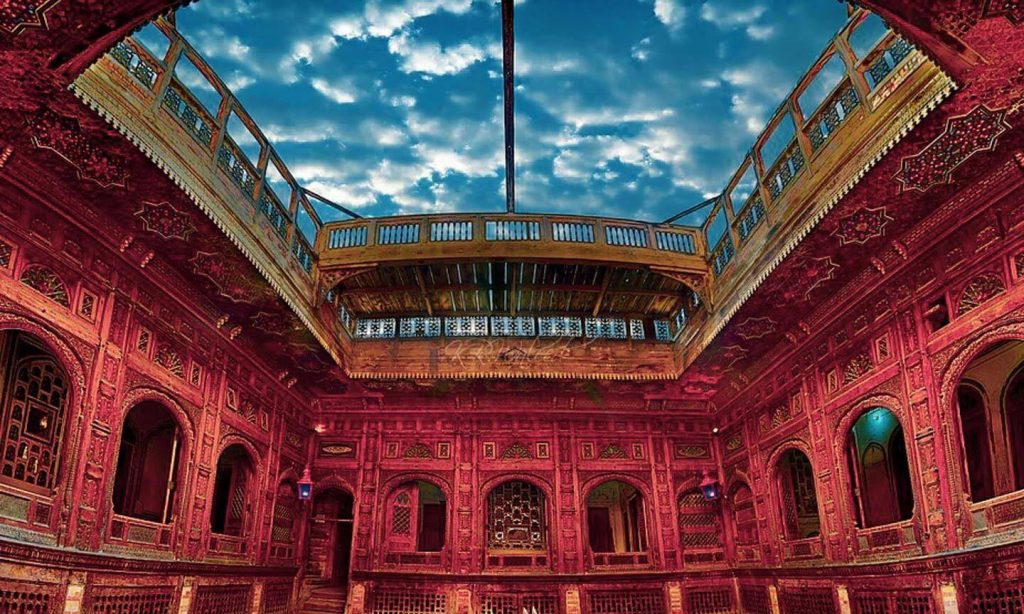
Sethi Mohallah, also known as Sethian Mohallah, is an old neighborhood in Peshawar, Pakistan. It consists of seven grand mansions built by the Sethi family in the late 19th century. One of the houses, known as Sethi House, has been purchased by the government and turned into a museum. It has 12 rooms, four basements, and a fountain. The house also showcases colorful glass ceilings, intricate woodwork, resting areas, and unique design elements like slanting window shades and wooden wall cupboards.
The Sethis were a Hindu trading family from Punjab who migrated to Peshawar and were involved in local and international trade. They also contributed to welfare projects in the city. However, their business suffered during the Russian Revolution, leading them to return to Peshawar.
Conclusion
Museums in Pakistan play a crucial role in preserving the country’s rich cultural heritage and historical treasures. These museums serve as portals connecting people to the nation’s soul, allowing them to delve into the past and gain valuable insights into Pakistan’s diverse history.
The efforts of these museums extend beyond preservation, as they serve as educational platforms, promote cultural exchange, and engage the public in exploring Pakistan’s past. These museums inspire a sense of pride and connection among visitors through their exhibits, artifacts, and interactive displays.

